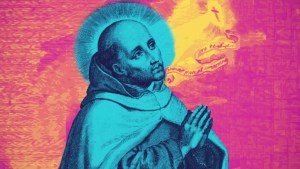Lenten Campaign 2025
This content is free of charge, as are all our articles.
Support us with a donation that is tax-deductible and enable us to continue to reach millions of readers.
Christian mysticism can be difficult to define. Its core tenets often vary from one tradition to another, and different schools of thought (whether theological, monastic, or philosophical) offer different insights and nuances into what we might think of as mysticism. And still, broadly speaking, it can be described as the spiritual tradition that seeks a direct and transformative encounter with God, often described as a deep awareness of His divine love and presence. This journey, while personal, is deeply rooted in the history and theology of the Church.
Before the sixth century, what we now call mysticism was known as contemplatio (Latin) or theoria (Greek) – both terms meaning literally “contemplation” and, by extension, an “awareness” of God’s presence. Contrary to what it might seem at first sight, the Greek theoria (“theory”) does not just mean “abstract thinking” – at least not in this context. In mystical traditions, this kind of “thinking” is more of a drive that invites the believer into a deep, loving knowledge of the divine.
A threefold spiritual journey
At the heart of Christian mysticism is a threefold spiritual journey.
The first stage is often referred to in classical texts as catharsis – that is, purification. Mystics often describe it as an inner “cleansing” of sorts, in which the soul seeks to rid itself of distractions and sin.
This is followed by contemplation, in which one enters into a prayerful and silent awareness of God by engaging in practices such as lectio divina, the meditative reading of Scripture.
The final stage, often called theosis or unio mystica (i.e., spiritual union with God), is a state in which the soul experiences a profound sense of connection with the divine, sometimes even through ecstatic visions or moments of deep spiritual peace.
This journey toward a personal encounter with God is central to the mystical tradition, which teaches that one can come to know and love God through deep, steady spiritual practice and inner transformation.
Mysticism also has important biblical and liturgical dimensions. The biblical dimension involves the discovery and meditation of “hidden,” often allegorical meanings in Scripture, while the liturgical aspect focuses on the Real Presence of Christ in the Eucharist. These two aspects, combined with experiential knowledge of God, form the backbone of Christian mystical theology.
Wayne Proudfoot, a noted American philosopher dedicated to religious experience, emphasizes the importance of understanding mysticism not merely as an emotional or extraordinary experience, but as a deeper awareness of God’s presence. Proudfoot traces the concept of religious experience to the German theologian Friedrich Schleiermacher, who argued that religion is rooted in a sense of the infinite – a sense of something greater than the self. Schleiermacher’s ideas, grounded in baroque and late medieval mysticism, laid the groundwork for a modern understandings of mysticism, which focus on how human beings experience God not as an “external” being, but as a presence deeply intertwined with our inner lives. Proudfoot’s work reminds us that mysticism isn’t just about visions or supernatural phenomena: It’s about cultivating an inner awareness that transforms the way we relate to God and the world.




